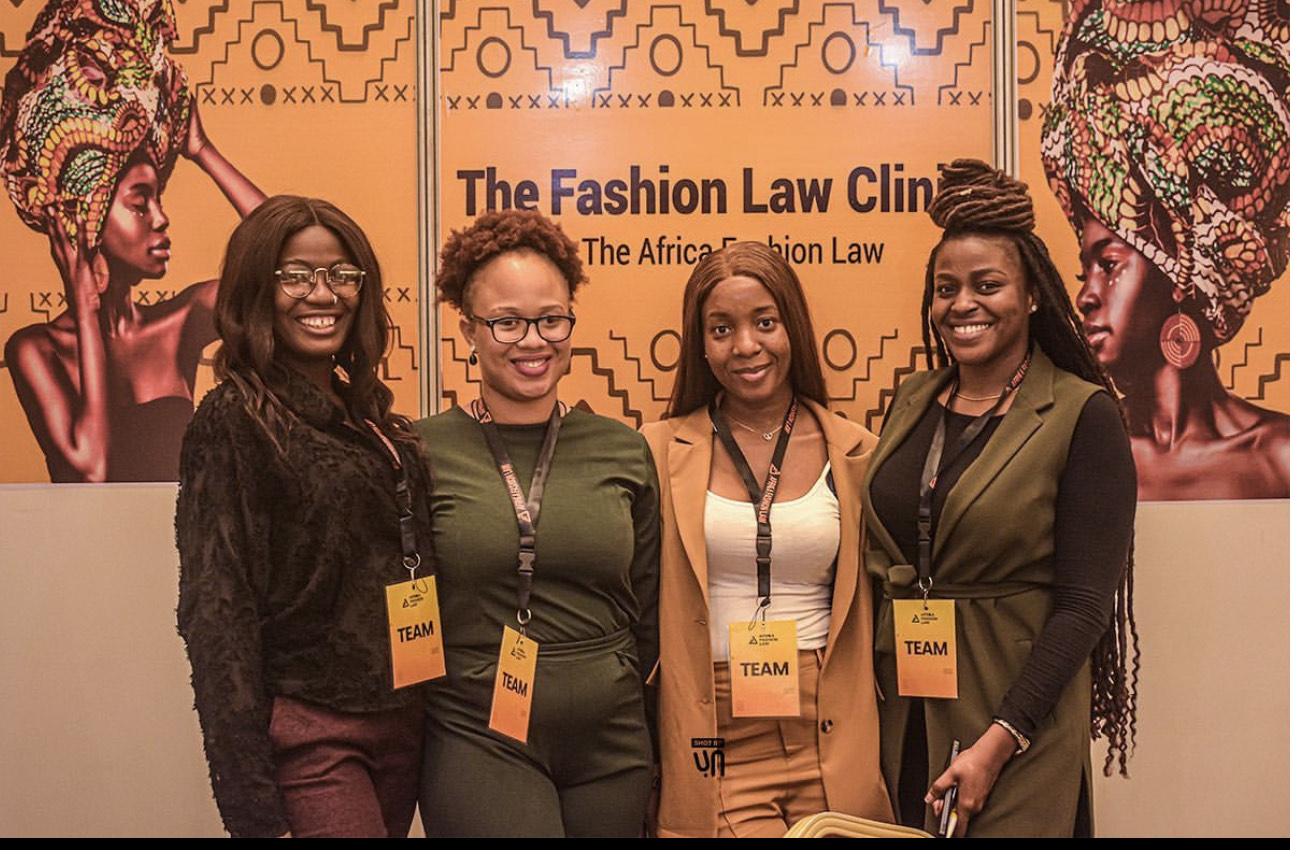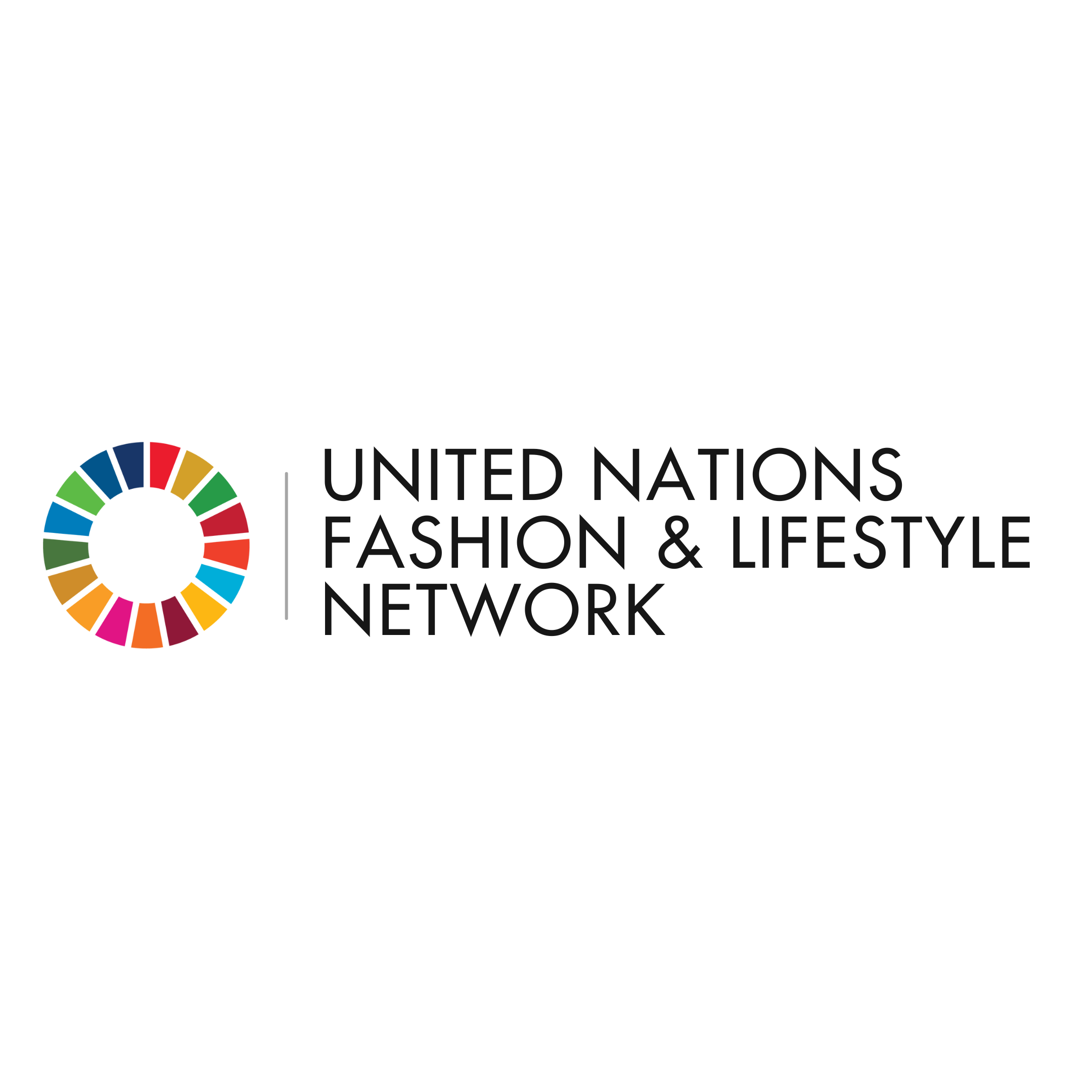The Creative Legal Clinic
The Africa Fashion Law
(
Private sector
)
#SDGAction52767
Description
The Creative Legal Clinic is a legal & business development consultation program hosted by The Africa Fashion Law. This consultation aims to cover key developmental subjects with highly experienced fashion lawyers for fashion creatives. The subjects include: business structuring, brand protection, intellectual property protection, transaction negotiation, business development & planning business and finance laws and investment laws. It is an initiative developed to largely be delivered in collaborations with Organisations that have the aim of supporting creatives by providing: access to business support and funding access to market
In the past, we have hosted the Creative Legal Clinic virtually and physically. At Physical Creative Legal Clinics, we usually have booths where we provide 15 mins free one-on-one consultations to fashion creatives. We start by understanding the business profile of the fashion creative and based on the business profile & goal, we provide solutions that we believe would propel the brands towards growth and enable them to reach their target. After the consultation, we ask for feedback from the fashion creative in order to implement their feedback in improving the creative legal clinic. For the Virtual Creative Legal Clinics, we normally host the creative legal clinic via google meet as we believe the details provided by the fashion creatives are confidential and should not be shared with a third party. Thus, we don't record the one on one consultations but after the virtual creative legal clinics, we get feedback from the fashion creatives in order for us to improve our process.
The Creative Legal Clinic constantly gears The Africa Fashion Law on our key approach to impacting the fashion industry by providing legal and business solutions for fashion creatives in Nigeria and Africa at large. A UNESCO study of the global cultural landscape estimated that 2.4 million people were employed in the creative industries in Africa in this creative industry. In the Creative Industry, we have The Fashion Industry which is a billion-dollar industry that has the potential to power economies and transforms millions of livelihoods. Yet there seems to be a major hindrance in the growth of the African Fashion Industry and we have channeled it down to the fact that fashion creatives in Nigeria and Africa at large are solely focused on the creative part of their businesses and not focusing on the business or legal aspect thus most of the businesses in the Africa Fashion Industry lack structure which affects the long term potential of businesses in the fashion industry scaling. There are major developmental issues affecting the growth of fashion brands in Nigeria and Africa at large. At least 70% of fashion brands in Nigeria lack proper business and organizational structure. This limits their growth, their opportunity to access investment, and to expand to the global market. Fashion creatives are not getting their due rewards for their creativity and they are not maximizing the global market access made available through leveraging e-commerce sites due to the limitations. There is an absence of a proper system to guide fashion brands on the due steps to take in structuring their brands. The Africa Fashion Law is here to change the narrative and The Creative Legal Clinic provides creatives with the necessary education & information. The clinic also enables us to define our target (beneficiaries) in a defined manner.
The Creative Legal Clinic is primarily organized in partnership with organizations that have fashion communities in Lagos Nigeria. We intend to expand this initiative across Nigeria and Africa as we are building partnerships with lawyers and business consultants across Nigeria and the continent
We recorded the following data from our First Creative Legal Clinic which we held in collaboration with The Fashion Finest Africa Show where we had thirty-five (35) fashion creatives access the consultation. Out of The 35 fashion creatives: Business Planning: 80% of the business owner neither had business plans nor financial statements Business Structuring: 50% of the creatives neither had a business nor company registration Intellectual Property Protection: 75% of the creatives didn’t have their intellectual property protected. Working with Contracts: 66.7% of the indicated that they do not work with contracts. This data indicates the need for this clinic as there are creatives all over Nigeria who have the talent but fail to understand key structures that are overall necessary for their development. The Africa Fashion Law is changing the narrative and we want to change the narrative in collaboration with organizations that have fashion communities.
We have had a total of four creative legal clinics for one hundred and ninety-five (95) fashion creatives in Lagos, Nigeria in partnership with several organizations that provide solutions for fashion brands and provide a community for fashion entrepreneurs. These organizations include; Fashion Finest Africa, The Source Textile and Apparel Show, 543 Inc, and Lagos Leather Fair. We are always looking toward developing new partnerships with organizations that provide support to fashion brands. In the month of June, we are working towards a partnership with Bumpa, a tech digital solution brand
SDGS & Targets
Goal 1
End poverty in all its forms everywhere
1.1
By 2030, eradicate extreme poverty for all people everywhere, currently measured as people living on less than $1.25 a day
1.1.1
Proportion of the population living below the international poverty line by sex, age, employment status and geographical location (urban/rural)
1.2
By 2030, reduce at least by half the proportion of men, women and children of all ages living in poverty in all its dimensions according to national definitions
1.2.1
Proportion of population living below the national poverty line, by sex and age
1.2.2
Proportion of men, women and children of all ages living in poverty in all its dimensions according to national definitions
1.3
Implement nationally appropriate social protection systems and measures for all, including floors, and by 2030 achieve substantial coverage of the poor and the vulnerable
1.3.1
Proportion of population covered by social protection floors/systems, by sex, distinguishing children, unemployed persons, older persons, persons with disabilities, pregnant women, newborns, work-injury victims and the poor and the vulnerable
1.4
By 2030, ensure that all men and women, in particular the poor and the vulnerable, have equal rights to economic resources, as well as access to basic services, ownership and control over land and other forms of property, inheritance, natural resources, appropriate new technology and financial services, including microfinance
1.4.1
Proportion of population living in households with access to basic services
1.4.2
Proportion of total adult population with secure tenure rights to land, (a) with legally recognized documentation, and (b) who perceive their rights to land as secure, by sex and by type of tenure
1.5
By 2030, build the resilience of the poor and those in vulnerable situations and reduce their exposure and vulnerability to climate-related extreme events and other economic, social and environmental shocks and disasters
1.5.1
Number of deaths, missing persons and directly affected persons attributed to disasters per 100,000 population
1.5.2
Direct economic loss attributed to disasters in relation to global gross domestic product (GDP)
1.5.3
Number of countries that adopt and implement national disaster risk reduction strategies in line with the Sendai Framework for Disaster Risk Reduction 2015-2030
1.5.4
Proportion of local governments that adopt and implement local disaster risk reduction strategies in line with national disaster risk reduction strategies
1.a
Ensure significant mobilization of resources from a variety of sources, including through enhanced development cooperation, in order to provide adequate and predictable means for developing countries, in particular least developed countries, to implement programmes and policies to end poverty in all its dimensions
1.a.1
Total official development assistance grants that focus on poverty reduction as a share of the recipient country’s gross national income
1.a.2
Proportion of total government spending on essential services (education, health and social protection)
1.b
Create sound policy frameworks at the national, regional and international levels, based on pro-poor and gender-sensitive development strategies, to support accelerated investment in poverty eradication actions
1.b.1
Pro-poor public social spending
Goal 8
Promote sustained, inclusive and sustainable economic growth, full and productive employment and decent work for all
8.1
8.1.1
Annual growth rate of real GDP per capita
8.2
Achieve higher levels of economic productivity through diversification, technological upgrading and innovation, including through a focus on high-value added and labour-intensive sectors
8.2.1
Annual growth rate of real GDP per employed person
8.3
Promote development-oriented policies that support productive activities, decent job creation, entrepreneurship, creativity and innovation, and encourage the formalization and growth of micro-, small- and medium-sized enterprises, including through access to financial services
8.3.1
Proportion of informal employment in total employment, by sector and sex
8.4
Improve progressively, through 2030, global resource efficiency in consumption and production and endeavour to decouple economic growth from environmental degradation, in accordance with the 10-Year Framework of Programmes on Sustainable Consumption and Production, with developed countries taking the lead
8.4.1
Material footprint, material footprint per capita, and material footprint per GDP
8.4.2
Domestic material consumption, domestic material consumption per capita, and domestic material consumption per GDP
8.5
8.5.1
Average hourly earnings of female and male employees, by occupation, age and persons with disabilities
8.5.2
Unemployment rate, by sex, age and persons with disabilities
8.6
8.6.1
Proportion of youth (aged 15-24 years) not in education, employment or training
8.7
Take immediate and effective measures to eradicate forced labour, end modern slavery and human trafficking and secure the prohibition and elimination of the worst forms of child labour, including recruitment and use of child soldiers, and by 2025 end child labour in all its forms
8.7.1
Proportion and number of children aged 5‑17 years engaged in child labour, by sex and age
8.8
Protect labour rights and promote safe and secure working environments for all workers, including migrant workers, in particular women migrants, and those in precarious employment
8.8.1
Fatal and non-fatal occupational injuries per 100,000 workers, by sex and migrant status
8.8.2
Level of national compliance with labour rights (freedom of association and collective bargaining) based on International Labour Organization (ILO) textual sources and national legislation, by sex and migrant status
8.9
By 2030, devise and implement policies to promote sustainable tourism that creates jobs and promotes local culture and products
8.9.1
Tourism direct GDP as a proportion of total GDP and in growth rate
8.10
Strengthen the capacity of domestic financial institutions to encourage and expand access to banking, insurance and financial services for all
8.10.1
(a) Number of commercial bank branches per 100,000 adults and (b) number of automated teller machines (ATMs) per 100,000 adults
8.10.2
Proportion of adults (15 years and older) with an account at a bank or other financial institution or with a mobile-money-service provider
8.a
8.a.1
Aid for Trade commitments and disbursements
8.b
By 2020, develop and operationalize a global strategy for youth employment and implement the Global Jobs Pact of the International Labour Organization
8.b.1
Existence of a developed and operationalized national strategy for youth employment, as a distinct strategy or as part of a national employment strategy
Goal 9
Build resilient infrastructure, promote inclusive and sustainable industrialization and foster innovation
9.1
9.1.1
Proportion of the rural population who live within 2 km of an all-season road
9.1.2
Passenger and freight volumes, by mode of transport
9.2
Promote inclusive and sustainable industrialization and, by 2030, significantly raise industry’s share of employment and gross domestic product, in line with national circumstances, and double its share in least developed countries
9.2.1
Manufacturing value added as a proportion of GDP and per capita
9.2.2
Manufacturing employment as a proportion of total employment
9.3
9.3.1
Proportion of small-scale industries in total industry value added, based on (a) international classification and (b) national classifications
9.3.2
Proportion of small-scale industries with a loan or line of credit
9.4
By 2030, upgrade infrastructure and retrofit industries to make them sustainable, with increased resource-use efficiency and greater adoption of clean and environmentally sound technologies and industrial processes, with all countries taking action in accordance with their respective capabilities
9.4.1
CO2 emission per unit of value added
9.5
9.5.1
Research and development expenditure as a proportion of GDP
9.5.2
Researchers (in full-time equivalent) per million inhabitants
9.a
9.a.1
Total official international support (official development assistance plus other official flows) to infrastructure
9.b
9.b.1
Proportion of medium and high-tech industry value added in total value added
9.c
Significantly increase access to information and communications technology and strive to provide universal and affordable access to the Internet in least developed countries by 2020
9.c.1
Proportion of population covered by a mobile network, by technology
Goal 10
Reduce inequality within and among countries
10.1
By 2030, progressively achieve and sustain income growth of the bottom 40 per cent of the population at a rate higher than the national average
10.1.1
Growth rates of household expenditure or income per capita among the bottom 40 per cent of the population and the total population
10.2
By 2030, empower and promote the social, economic and political inclusion of all, irrespective of age, sex, disability, race, ethnicity, origin, religion or economic or other status
10.2.1
Proportion of people living below 50 per cent of median income, by sex, age and persons with disabilities
10.3
Ensure equal opportunity and reduce inequalities of outcome, including by eliminating discriminatory laws, policies and practices and promoting appropriate legislation, policies and action in this regard
10.3.1
Proportion of population reporting having personally felt discriminated against or harassed within the previous 12 months on the basis of a ground of discrimination prohibited under international human rights law
10.4
Adopt policies, especially fiscal, wage and social protection policies, and progressively achieve greater equality
10.4.1
Labour share of GDP
10.4.2
Redistributive impact of fiscal policy on the Gini index
10.5
Improve the regulation and monitoring of global financial markets and institutions and strengthen the implementation of such regulations
10.5.1
Financial Soundness Indicators
10.6
10.6.1
Proportion of members and voting rights of developing countries in international organizations
10.7
Facilitate orderly, safe, regular and responsible migration and mobility of people, including through the implementation of planned and well-managed migration policies
10.7.1
Recruitment cost borne by employee as a proportion of montlhy income earned in country of destination
10.7.2
Number of countries with migration policies that facilitate orderly, safe, regular and responsible migration and mobility of people
10.7.3
Number of people who died or disappeared in the process of migration towards an international destination
10.7.4
Proportion of the population who are refugees, by country of origin
10.a
10.a.1
Proportion of tariff lines applied to imports from least developed countries and developing countries with zero-tariff
10.b
10.b.1
Total resource flows for development (e.g. official development assistance, foreign direct investment and other flows)
10.c
By 2030, reduce to less than 3 per cent the transaction costs of migrant remittances and eliminate remittance corridors with costs higher than 5 per cent
10.c.1
Remittance costs as a proportion of the amount remitted
SDG 14 targets covered
| Name | Description |
|---|
Deliverables & Timeline
In 2022, We provided free one-one legal consultations to One Hundred and Ninety Five (105) Fashion Creatives
In the first Quarter of 2023, we have successfully provided free one on one legal and business consultations to Ninety (90) Fashion Creatives
Resources mobilized
Partnership Progress

Feedback
Action Network

Timeline
Entity
Region
- Africa
Geographical coverage
Other beneficiaries
The beneficiaries are primarily creatives in the fashion industry that are intentional about their growth in business. The creatives are primarily fashion and lifestyle entrepreneurs intending to start up their businesses, improve their business processes, or expand their businesses.
More information
Countries
Contact Information
Annie Oti, Founder/CEO

